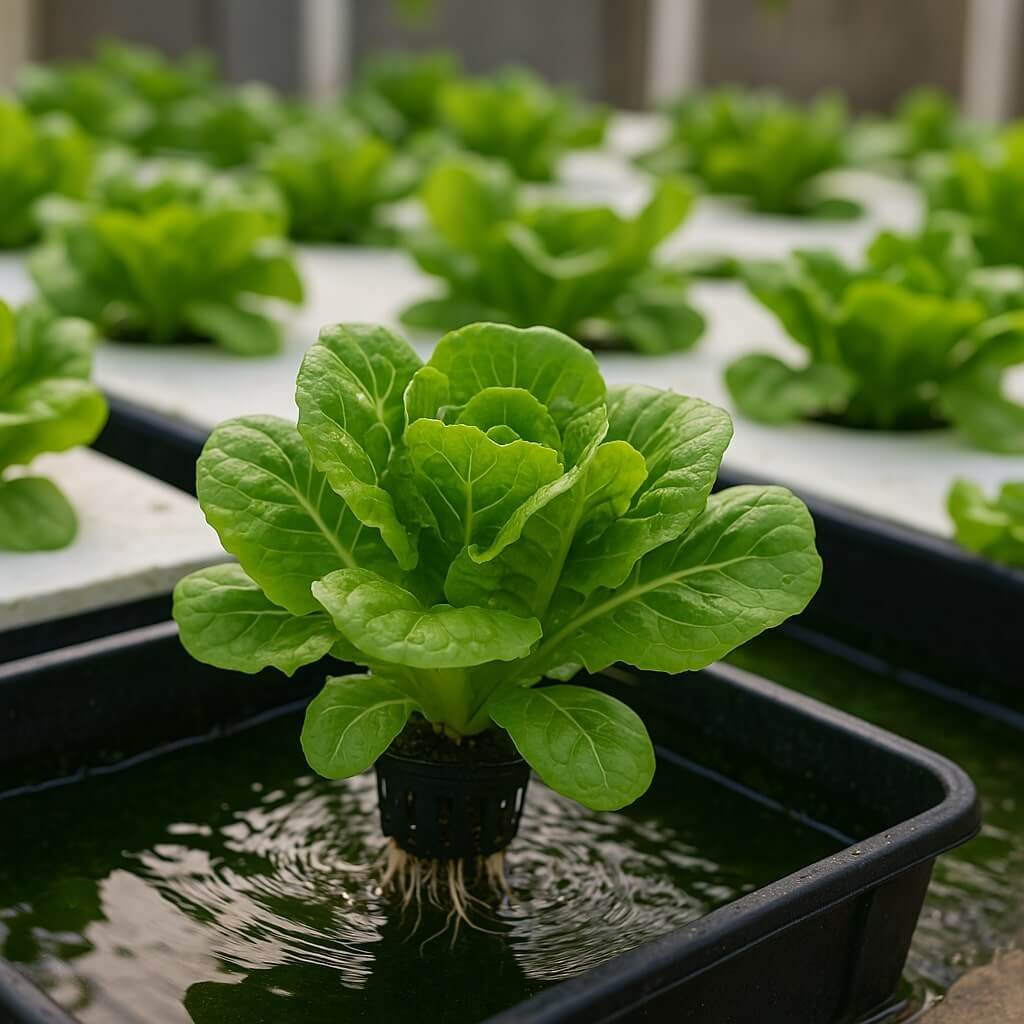A Beginner’s Guide to Crisp, Soil-Free Greens
Hydroponics is revolutionizing the way we grow food — and lettuce is one of the easiest crops to start with. Whether you’re a hobbyist gardener or a tech-savvy urban dweller, growing lettuce hydroponically offers a fast, clean, and space-efficient way to enjoy fresh greens year-round.
In this guide, we’ll walk you through everything you need to know to grow lettuce in hydroponics — from choosing the right system to harvesting your first crunchy leaf.
🌱 Why Choose Hydroponics for Lettuce?
Hydroponics is a method of growing plants without soil, using nutrient-rich water. Lettuce thrives in this setup because:
- It grows quickly — often ready to harvest in 30 days.
- It requires minimal space and light.
- It’s less prone to pests and diseases.
- It offers consistent yields year-round.
🧪 Step-by-Step: How to Grow Lettuce in Hydroponics
1. Choose Your Hydroponic System
There are several systems suitable for lettuce:
| System Type | Description | Best For |
|---|---|---|
| Kratky Method | Passive system with no pump; ideal for beginners. | Small setups |
| Deep Water Culture (DWC) | Roots suspended in oxygenated nutrient solution. | Home growers |
| Nutrient Film Technique (NFT) | Thin film of nutrients flows over roots. | Commercial setups |
For beginners, the Kratky Method or DWC is easiest to manage.
2. Select Lettuce Varieties
Lettuce types that thrive in hydroponics include:
- Butterhead (Bibb) – Soft, buttery leaves.
- Romaine – Crisp and upright.
- Looseleaf – Fast-growing and easy to harvest.
Avoid iceberg lettuce for hydroponics — it’s slow-growing and less suited to water-based systems.
3. Prepare Your Growing Medium
Use a sterile, porous medium to support seedlings:
- Rockwool
- Coco coir
- Perlite
- Clay pellets
These allow roots to anchor while absorbing nutrients efficiently.
4. Germinate Seeds
- Place seeds in moistened plugs or trays.
- Keep temperature between 65–75°F (18–24°C).
- Provide 12–14 hours of light daily.
- Seeds typically sprout in 5–10 days.
Once seedlings have 2–3 leaves, transplant them into your hydroponic system.
5. Mix Nutrient Solution
Lettuce needs:
- Nitrogen (N) – Leaf growth
- Phosphorus (P) – Root development
- Potassium (K) – Overall health
- Calcium & Magnesium – Prevent tip burn
Maintain pH between 5.5–6.5 and EC (electrical conductivity) around 1.2–1.8.
6. Lighting and Temperature
- Use LED grow lights or fluorescent tubes.
- Provide 10–14 hours of light daily.
- Keep air temperature between 60–75°F (15–24°C).
- Avoid high heat — it causes bolting and bitterness.
7. Monitor Growth
- Check water levels and pH daily.
- Replace nutrient solution every 2 weeks.
- Watch for signs of deficiency (yellow leaves, stunted growth).
8. Harvesting Lettuce
- Ready in 4–6 weeks.
- Harvest outer leaves first to allow continued growth.
- For head varieties, cut the entire plant at the base.
Store harvested lettuce in a cool, humid environment to retain freshness.
🛡️ Common Issues & Solutions
| Problem | Cause | Solution |
|---|---|---|
| Yellow leaves | Nutrient deficiency | Adjust NPK levels |
| Bitter taste | High temperature | Lower ambient temperature |
| Root rot | Poor aeration or overwatering | Use air pump; reduce saturation |
| Algae growth | Light exposure to water | Cover reservoir; reduce light |
❓ FAQs: Growing Lettuce in Hydroponics
Q1: How long does hydroponic lettuce take to grow?
A: Most varieties mature in 30–45 days, depending on light and nutrients.
Q2: Can I grow lettuce hydroponically without electricity?
A: Yes! The Kratky Method is a passive system that doesn’t require pumps or electricity.
Q3: What’s the best lettuce for beginners?
A: Looseleaf lettuce is fast-growing and forgiving — perfect for first-time growers.
Q4: How do I prevent bitterness in hydroponic lettuce?
A: Keep temperatures below 75°F (24°C) and avoid overexposure to light.
Q5: Can I reuse the growing medium?
A: Yes, but sterilize it thoroughly to prevent disease and algae buildup.





